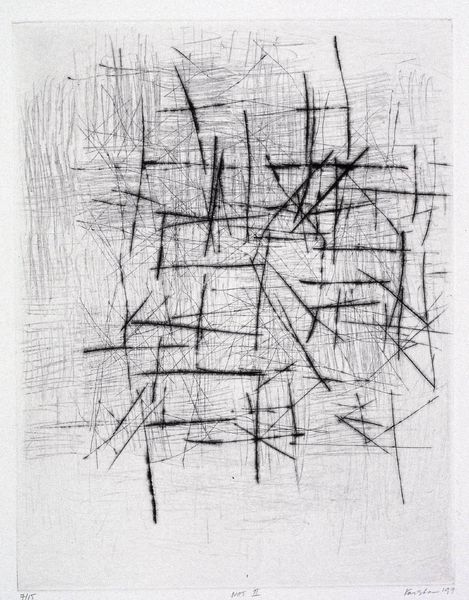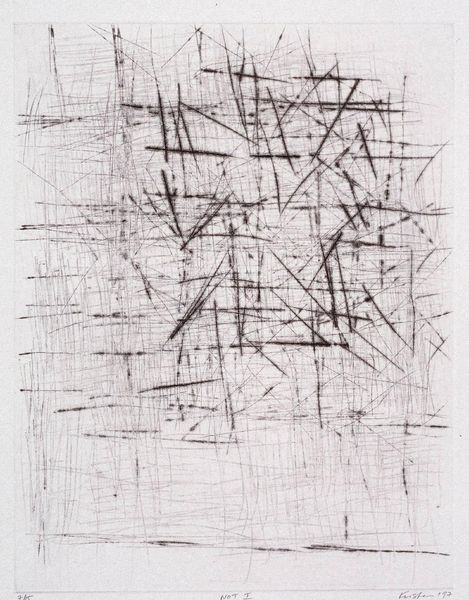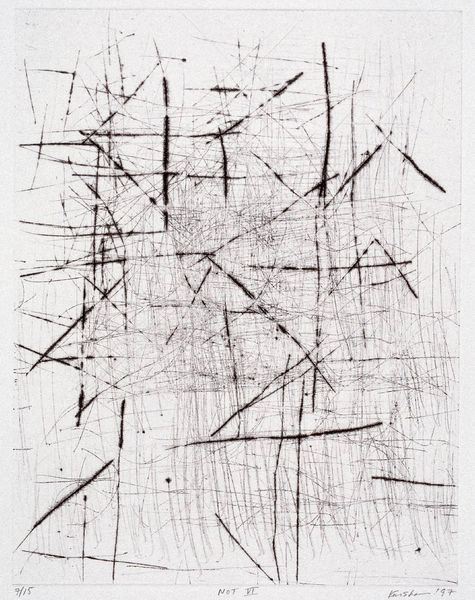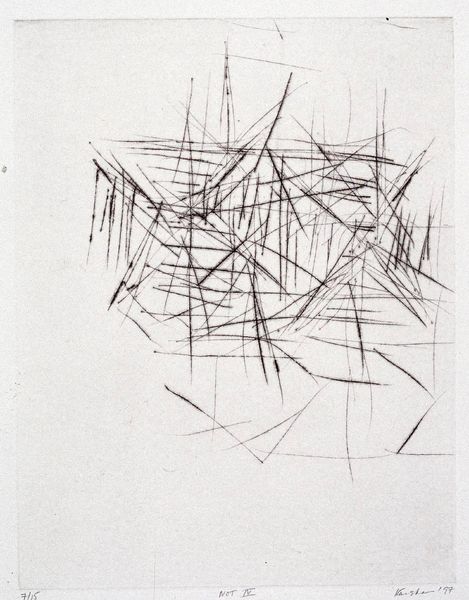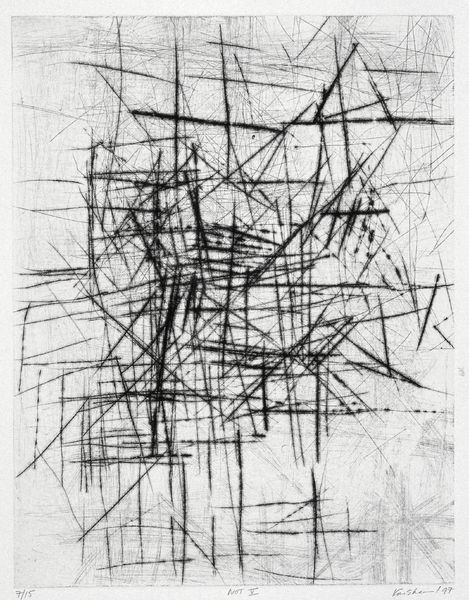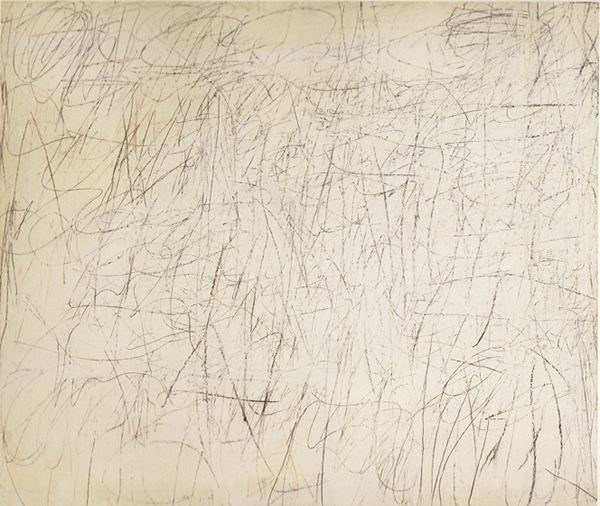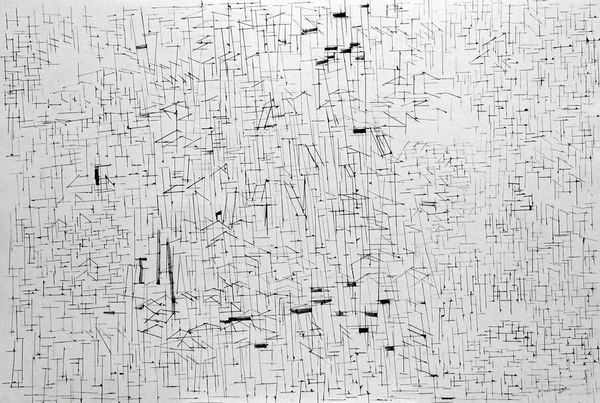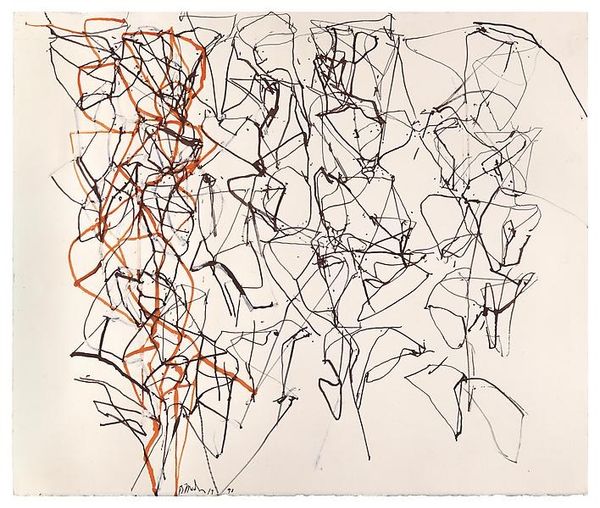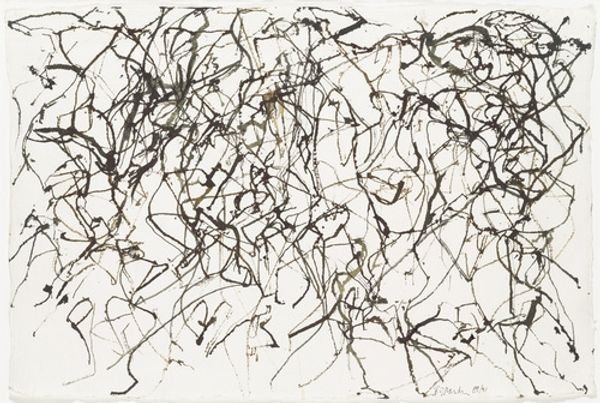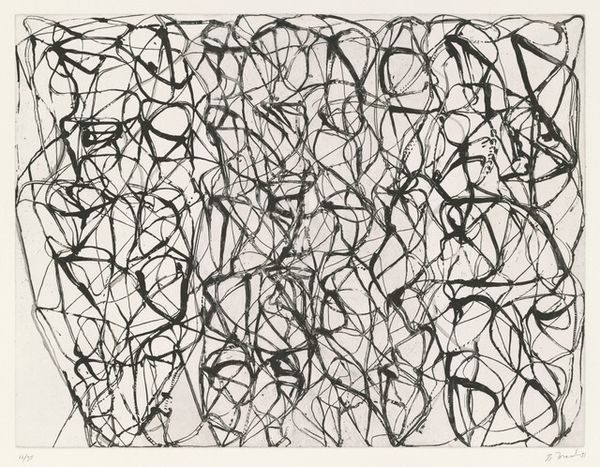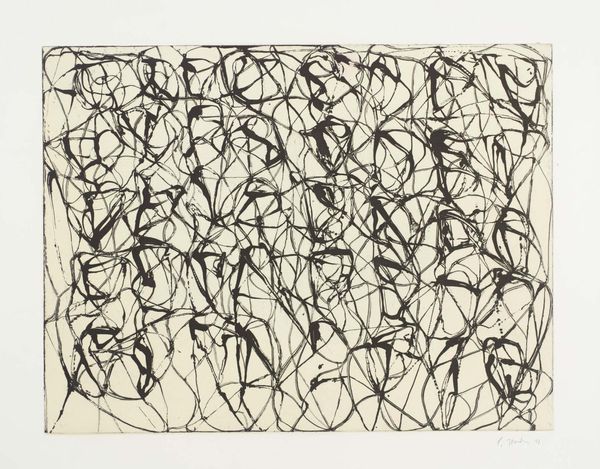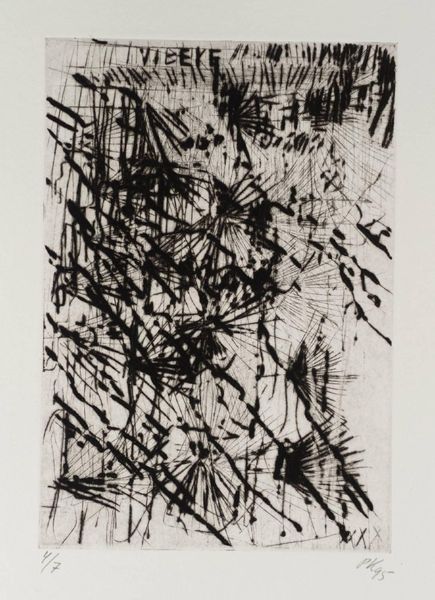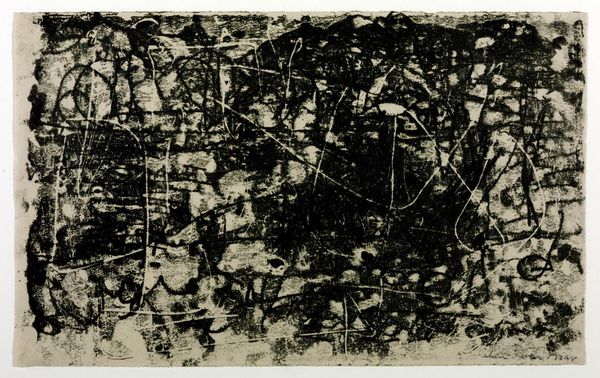
drawing, ink
#
abstract-expressionism
#
drawing
#
etching
#
ink
#
linocut print
#
geometric
#
abstraction
#
line
Copyright: Kazuo Nakamura,Fair Use
Curator: Standing before us is Kazuo Nakamura’s "Inner View" created in 1954. The work employs ink on what appears to be either paper or a prepared board. Editor: My first impression is of an urban landscape seen through fractured glass. It’s all lines, sharp angles, and a sense of restless energy. It feels like chaos held in precarious balance. Curator: It's interesting you see chaos; I immediately focus on the precision and the evidence of process. Nakamura’s exploration of line here is quite deliberate, almost like a topographical survey reduced to its barest essentials. We see evidence of ink, likely applied with different instruments to create variance. Do you think there's evidence of an etching or perhaps linocut print? It would really emphasize his deliberate process. Editor: The symbols read like abstracted language or musical notation—a system of communication we’ve lost the key to. I see suggestions of power grids, circuit boards. It reflects, to me, the anxiety and the burgeoning technology that was characteristic of the Cold War era, if this dates from the mid-50's. What material context influenced his making of this, given the Cold War context? Curator: Nakamura emigrated from Canada from Japan, and there is definitely a sense of postwar unease reflected here. Yet, to focus strictly on his cultural origins perhaps overshadows the universality of his mark-making, and this may very well challenge assumptions. How do materials dictate such interpretation, or vice-versa? It might speak more readily to mid-century abstract tendencies toward stripping away cultural iconography for more universal forms. Editor: Maybe. But Nakamura's personal history cannot be separated from the piece either. If we acknowledge the atomic fears present at the time in postwar abstraction and align that context alongside the artist's own ethnic identity as a Japanese-Canadian artist, is it that surprising we consider it more seriously when assessing meaning and intent here? It suggests coded languages expressing a more profound sentiment beyond sheer material concerns. Curator: A compelling interpretation indeed, if still one rooted, nonetheless, in concrete social realities. I, too, cannot divorce the intent of any artist making use of his particular circumstances whether he explicitly voices this intent or not. Editor: It shows the potency and power a black line holds to contain worlds! Curator: A fitting sentiment and reminder, for us all, that every work asks more of us than to simply meet its surface. Thank you for considering "Inner View" today.
Comments
No comments
Be the first to comment and join the conversation on the ultimate creative platform.

